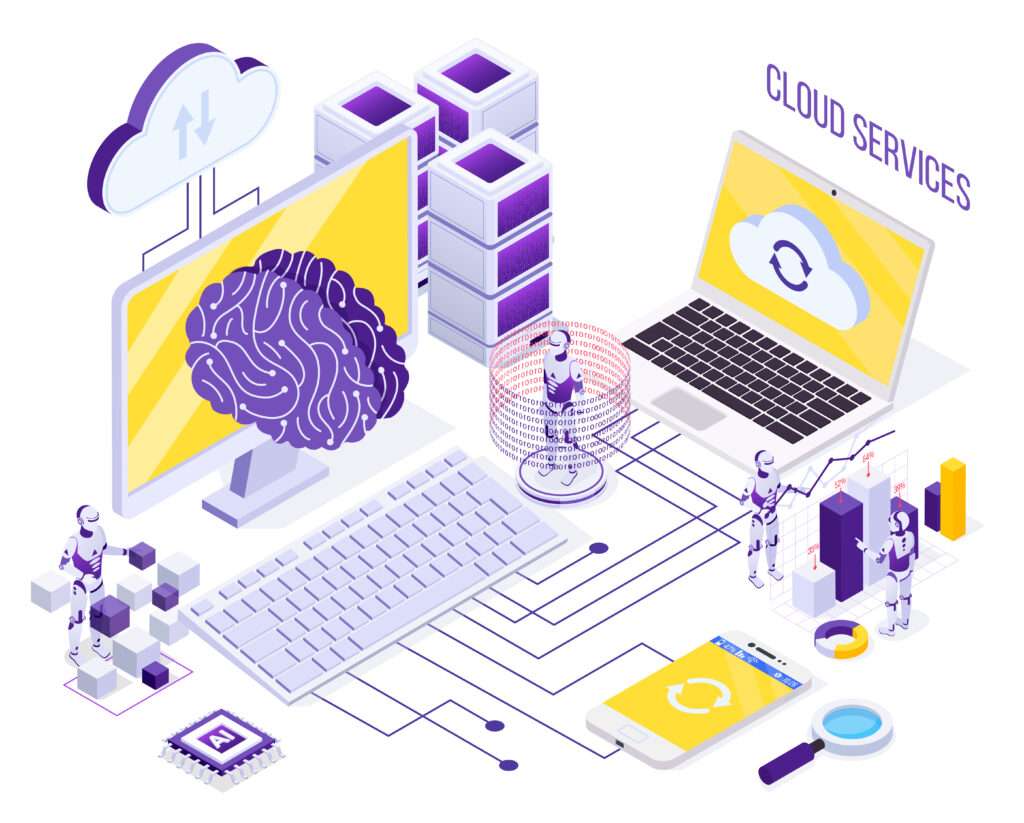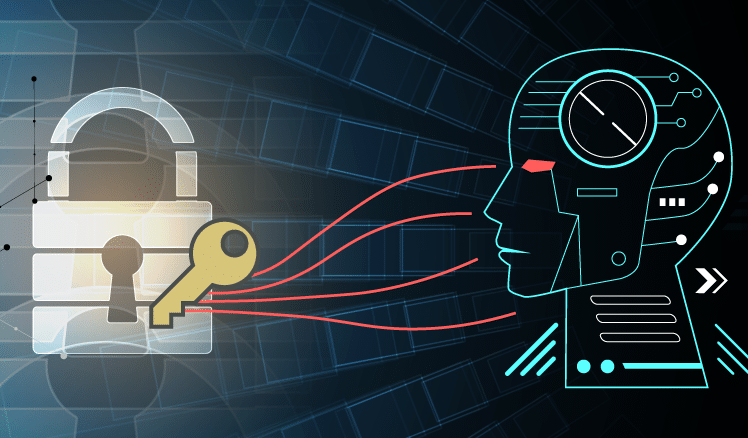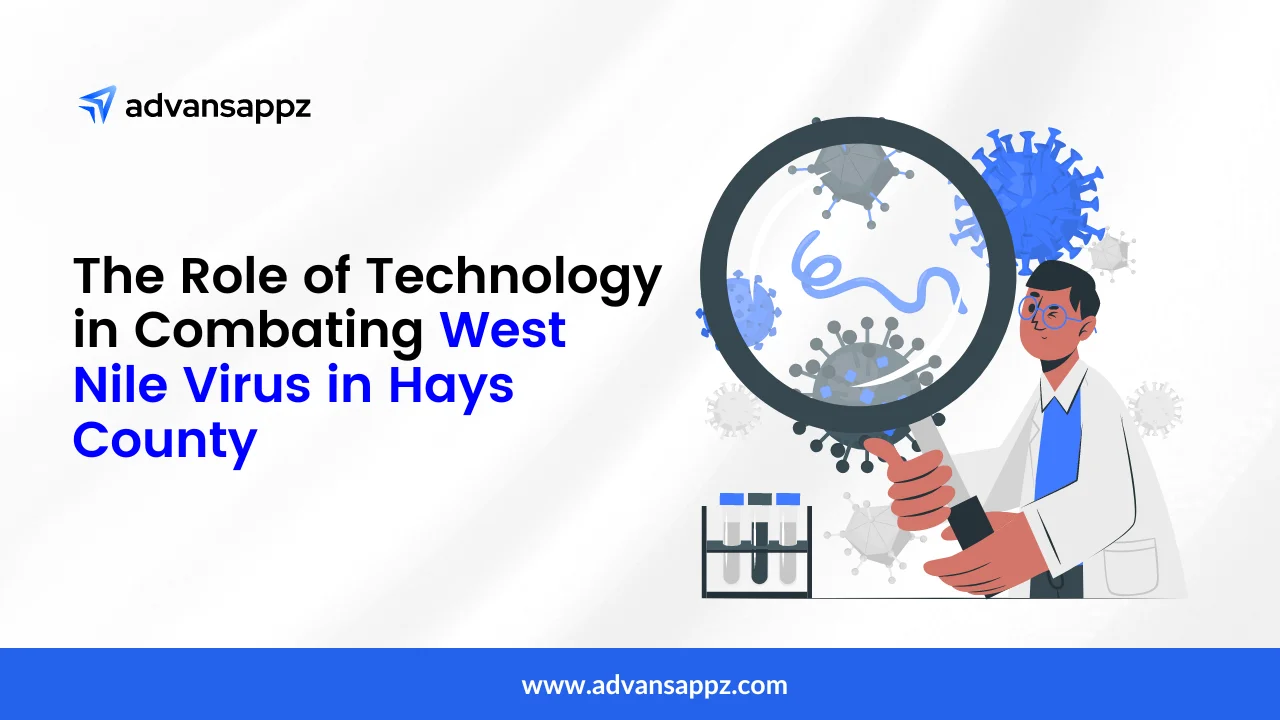In recent years, the frequency and complexity of cyberattacks have increased, making it harder for organizations to keep their systems and data secure. Several firms are turning to artificial intelligence (AI) to strengthen their cybersecurity defenses. Compared to conventional security techniques, AI in cybersecurity can assist organizations in detecting risks and responding to them more rapidly and effectively. Also, AI can automate many cybersecurity tasks, such as threat detection and analysis, and provide real-time insights into security risks.
According to a study, using AI instead of traditional techniques can help detect cybersecurity threats by up to 95%. Still, many businesses are skeptical about integrating AI into their cybersecurity infrastructure. This is due to the lack of authentic information on the role of AI in cybersecurity. This blog aims to answer questions like-
- What is AI in cybersecurity?
- How can AI improve cybersecurity?
- How AI in cybersecurity can help businesses proactively detect and avoid cyber threats.
So, let’s move forward and understand the role of AI in cybersecurity in detail.

What is Artificial Intelligence in cybersecurity?
With the rapid digitization of organizations, cyber threats have increased tenfold. Digital advancement has given way to opportunities and threats to the business world. As a result, brands are continuously looking for solutions to strengthen their cybersecurity systems. Among these solutions, AI has come forward as the most effective. In fact, 51% of organizations primarily rely on AI solutions to identify and respond to threats.
AI in cybersecurity is the use of different AI and machine learning solutions to detect cyber threats, mitigate risks, and implement preventive measures to fight off cyber attacks. Let’s understand the use cases of AI in cybersecurity in detail.
How AI is used in cybersecurity

1. Threat Detection and Prevention
AI can assist businesses in real-time online threat detection and prevention. AI-based systems can analyze large amounts of data, including network traffic, user behavior, and system logs, to identify anomalous activities that may indicate a security breach. This allows organizations to respond quickly to potential threats before they cause significant damage.
2. User Authentication
User authentication processes, such as facial recognition or fingerprint identification, have now improved with the help of AI. Since they are difficult to fake or steal, these techniques are more secure than conventional passwords. Aside from analyzing user behavior, AI algorithms can also identify suspicious activity, such as repeated failed login tries or irregular login times, and alert security teams.
3. Cyber Attack Response
AI helps automate the response to cyber-attacks. For example, if a system detects an attack, it can automatically block the attacker’s IP address or isolate the affected system to prevent the attack from spreading. By doing this, the attack’s damage is lessened, and the reaction time is shortened.
4. Malware Detection
With the aid of AI, malicious software of all kinds can be quickly and easily discovered. AI algorithms can analyze the code and behavior of software to identify signs of malicious activity. This allows organizations to detect and remove malware from their systems quickly.

Benefits of using AI in cybersecurity
As cyber threats continue to evolve, AI will play an increasingly important role in helping organizations keep their systems and data secure.
1. Enhanced threat detection:
Organizations are able to quickly recognize and react to potential threats thanks to AI algorithms’ ability to analyze vast amounts of data in real-time. AI can also detect patterns and anomalies that may be missed by traditional security methods, helping to prevent cyberattacks before they occur.
2. Rapid response to threats:
AI can automate threat response, allowing organizations to respond to threats in real-time, 24/7. This rapid response time is critical in preventing cyberattacks and minimizing the damage they can cause.
3. Reduced costs:
AI can automate many of the repetitive tasks associated with cybersecurity, such as threat detection and response, freeing up staff to focus on more complex tasks. Additionally, AI can reduce the need for manual security audits, which can be time-consuming and costly.
4. Improved accuracy:
AI algorithms can analyze data more accurately than humans, making them well-suited to cybersecurity tasks. By using AI to monitor networks and systems, organizations can identify threats more quickly and accurately, reducing the risk of false positives or false negatives.
5. Scalability:
As organizations grow and expand, their cybersecurity needs also grow. AI is highly scalable, meaning it can handle large amounts of data and adapt to changing environments. This scalability makes AI an ideal tool for organizations looking to improve their cybersecurity defenses as they grow.
Top AI-based cybersecurity tools
Darktrace
Darktrace is an AI-based cybersecurity tool that uses machine learning algorithms to detect and respond to threats in real time. It can analyze network traffic, user behavior, and system logs to identify anomalies and potential threats. Darktrace also uses unsupervised machine learning, which allows it to identify new and unknown threats that traditional cybersecurity tools may not detect.
Cylance
Cylance is an AI-driven cybersecurity platform that uses machine learning and predictive analytics to provide advanced threat detection and prevention capabilities. The platform uses a mathematical approach to identify and stop threats rather than relying on traditional signature-based methods.Cylance’s key product is CylancePROTECT, which provides endpoint protection against a wide range of threats, including malware, file-less attacks, and zero-day exploits. CylancePROTECT uses AI and machine learning to analyze and classify files based on their potential threat level, allowing it to block known and unknown threats in real time.
IBM Watson for Cybersecurity
An AI-powered platform that uses natural language processing (NLP), machine learning, and other advanced technologies to help organizations identify and respond to cyber threats. The platform can help security teams sift through massive amounts of data from various sources, such as logs, network traffic, and security events, to detect potential security incidents. It can also analyze threat intelligence and research to provide insights into the latest threats and vulnerabilities.
McAfee MVISION
McAfee MVISION is a cloud-based security platform that provides comprehensive protection against threats to endpoints, networks, and cloud environments. The platform uses artificial intelligence, machine learning, and automation to provide real-time threat detection, prevention, and response. MVSION includes multiple security modules, including Endpoint Security, Cloud Security, and Network Security, that can be deployed as standalone products or integrated together to provide a comprehensive security solution.

Challenges with AI in cybersecurity
AI can help organizations defend their networks, systems, and applications against cyber-attacks. However, AI implementation comes with its own set of challenges. Here, we will explore some of the challenges with AI in cybersecurity and how organizations can address them.
Challenge 1: Data Quality
AI models need to be trained with a large amount of data to learn and make accurate predictions. However, the quality of the data is crucial for the effectiveness of AI in cybersecurity. Poor-quality data can result in biased models and inaccurate predictions. In the case of cybersecurity, the data used to train AI models can be incomplete or inaccurate, making it challenging to detect advanced threats.
Solution: Organizations should ensure that the data used to train AI models is of high quality, complete, and accurate. They should also validate the data to identify any inconsistencies or biases. Data validation should be done regularly to ensure that the data is up-to-date.
Challenge 2: Adversarial Attacks
Adversarial attacks are a form of cyber-attack where an attacker intentionally manipulates the input data to fool an AI model. This can result in false positives or negatives, which can be detrimental to an organization’s security. Adversarial attacks can be used to bypass security controls, evade detection, and gain access to sensitive data.
Solution: AI models should be used in organizations that can withstand hostile attacks. Adversarial training, which entails exposing the AI model to challenging cases, can be used to do this. To lessen the effects of adversarial assaults, companies should also employ other security measures like access restriction and encryption.
Challenge 3: Explainability
AI models can be opaque, making understanding how they arrive at their decisions challenging. This lack of transparency can be a significant issue in the case of cybersecurity, where the consequences of false positives or false negatives can be severe.
Solution: Companies should deploy AI models that are explainable. This can be achieved by using interpretable models or by implementing techniques such as LIME (Local Interpretable Model-Agnostic Explanations) or SHAP (SHapley Additive exPlanations) that provide insight into how an AI model arrives at its decisions.
Future Outlook
Potential advancements and innovations in AI and cybersecurity
- According to a report by MarketsandMarkets, the global AI in cybersecurity market is projected to reach $38.2 billion by 2026, indicating significant growth and investment in AI-powered security solutions.
- Gartner predicts that by 2025, 50% of organizations will be actively using AI for cybersecurity, up from 10% in 2020, highlighting the increasing adoption and integration of AI technologies.
- A survey conducted by EY reveals that 77% of organizations believe that AI will significantly transform cybersecurity practices in the next three years, underscoring the anticipation for future advancements.
The evolving role of AI in combating cyber threats
- IBM’s Cost of a Data Breach Report indicates that organizations using AI-driven security analytics experienced an average cost savings of $3.58 million per data breach incident, demonstrating the effectiveness of AI in threat detection and response.
- A study by the University of Maryland found that AI-powered malware detection systems outperformed traditional antivirus software by detecting 99% of previously unseen malware samples, showcasing the potential of AI to stay ahead of evolving cyber threats.
- The World Economic Forum’s Global Information Technology Report suggests that AI-powered security systems can reduce the time taken to detect and respond to cyber-attacks by up to 70%, enabling faster incident mitigation.
Collaboration and knowledge sharing for a secure digital future
- The Cybersecurity Alliance for Mutual Progress (CAMP) reports that 86% of organizations believe that collaboration between the public and private sectors is essential for effectively combating cyber threats in the future.
- The Cyber Threat Alliance (CTA) states that sharing threat intelligence among industry peers can improve threat detection and response, with CTA members collectively preventing over 1 million cybersecurity incidents in 2020.
- A study by Accenture shows that organizations that actively participate in industry collaborations and share cybersecurity best practices are 15% more likely to fend off cyber attacks effectively.
Also check: AI in Finance: A Comprehensive Guide
Conclusion
Cybersecurity and AI have by far been the best combination to fight off malware attacks and safeguard businesses’ confidential data from any kind of breach. As cyberattacks grow in number, artificial intelligence is continuously helping under-resourced security operations analysts stay ahead of threats.
Frequently Asked Questions
AI (Artificial Intelligence) is increasingly being used in cybersecurity to enhance the detection, prevention, and response capabilities against cyber threats. The integration of AI in cybersecurity helps to analyze vast amounts of data, identify patterns, and make real-time decisions to defend against various cyberattacks.
Here are some key ways AI is used in cybersecurity:
-
Threat Detection: AI-powered systems can analyze network traffic, user behavior, and system logs to identify anomalous patterns that may indicate a cyber threat. Machine learning algorithms can learn from historical data to recognize known attack signatures and also detect previously unseen or zero-day attacks.
-
Anomaly Detection: AI can detect unusual activities or deviations from normal behavior in real-time. For example, it can identify abnormal login attempts, data access patterns, or other suspicious activities that may indicate a potential breach.
-
Malware Detection: AI can help in the identification of malware and malicious files by analyzing their characteristics and behavior. AI-driven antivirus and endpoint protection solutions can quickly respond to new and evolving threats.
-
Phishing and Fraud Prevention: AI can analyze and learn from phishing emails and websites, helping to detect and block such attempts more effectively. It can also assist in the detection of fraudulent financial transactions.
-
Behavioral Biometrics: AI can be used to establish patterns of typical user behavior, such as typing speed, mouse movements, or touchscreen interactions. This behavioral biometric analysis can help detect unauthorized access attempts.
-
Security Automation: AI-powered automation can streamline and optimize security operations, reducing response times and human error. Automated responses can be triggered for specific threats, allowing for rapid containment and mitigation.
-
Predictive Security Analysis: AI can analyze historical data and trends to predict potential future cyber threats, enabling organizations to proactively strengthen their security posture.
-
Cybersecurity Analytics: AI and machine learning can help security analysts process and analyze large volumes of security data more efficiently, making it easier to identify and respond to potential threats.
-
Network Security: AI can monitor network traffic in real-time, identify suspicious activities, and apply intelligent access controls to protect against unauthorized access and lateral movement within the network.
-
AI itself is not a cybersecurity measure, but it is a powerful tool used within cybersecurity to enhance defense mechanisms and bolster overall security efforts. AI is one of the technologies employed in the field of cybersecurity to improve threat detection, response, and prevention capabilities.
Cybersecurity involves protecting computer systems, networks, and data from various cyber threats, such as malware, hacking attempts, data breaches, and other malicious activities. AI can be applied in cybersecurity in various ways, such as:
-
Threat Detection: AI algorithms can analyze vast amounts of data to identify patterns and anomalies that may indicate a cyber threat. This helps in quickly detecting and responding to potential security breaches.
-
Anomaly Detection: AI-based anomaly detection systems can identify abnormal behaviors in real-time, allowing for the swift identification of suspicious activities.
-
Malware Detection: AI-powered antivirus and endpoint protection solutions can detect and mitigate malware threats more effectively, even against previously unseen or zero-day attacks.
-
Phishing and Fraud Prevention: AI can analyze phishing emails and websites to better identify and block phishing attempts and fraudulent activities.
-
Security Automation: AI-driven automation can streamline security operations, allowing for faster response times and improved incident management.
-
Behavioral Biometrics: AI can analyze user behavior to establish patterns of typical interactions, enabling better detection of unauthorized access attempts.
-
Predictive Security Analysis: AI can analyze historical data and trends to predict potential future cyber threats, helping organizations be more proactive in strengthening their security posture.
-
Network Security: AI can monitor network traffic and apply intelligent access controls to protect against unauthorized access and lateral movement within the network.
-
-
Machine Learning (ML): Machine learning algorithms are widely used in cybersecurity to analyze vast amounts of data, identify patterns, and make predictions. Supervised learning can help classify data into different categories (e.g., normal vs. malicious behavior), while unsupervised learning can identify anomalies or unknown patterns.
-
Deep Learning: Deep learning is a subset of machine learning that uses neural networks with multiple layers to process and analyze complex data. Deep learning models excel in tasks like image and speech recognition, which can be useful in certain cybersecurity applications.
-
Natural Language Processing (NLP): NLP enables AI systems to understand and interpret human language. In cybersecurity, NLP can be applied to analyze and respond to text-based threats, such as phishing emails or social engineering attempts.
-
Behavioral Analytics: AI-driven behavioral analytics monitors and profiles user behavior, network activity, or system behavior to establish baselines and identify anomalous activities that might indicate a cyber threat.
-
Predictive Analytics: Predictive AI models analyze historical data and patterns to forecast potential future cyber threats. This helps organizations to take proactive measures to mitigate risks.
-
Bayesian Networks: Bayesian networks are probabilistic models that can assess the likelihood of certain events based on the probability of related events. They are useful for threat modeling and risk assessment in cybersecurity.
-
Expert Systems: Expert systems are AI systems designed to mimic human expertise in specific domains. In cybersecurity, they can be used for decision-making and incident response, basing their actions on predefined rules and knowledge.
-
Genetic Algorithms: Genetic algorithms imitate the process of natural selection to optimize solutions for complex problems. In cybersecurity, they can be employed for tasks like generating strong encryption keys or finding optimal configurations for security policies.
-
Fuzzy Logic: Fuzzy logic allows for degrees of truth, rather than strict binary values, which can be valuable in cybersecurity decision-making when dealing with uncertain or imprecise data.
-
Swarm Intelligence: Inspired by the collective behavior of social organisms like ants or bees, swarm intelligence algorithms are used for tasks like intrusion detection, where a collective of simple agents works together to solve complex problems.
The classification of AI systems can vary depending on the criteria used. One common classification categorizes AI systems into four types based on their capabilities and functionalities:
-
Reactive Machines: Reactive machines are the simplest form of AI systems. They do not have memory or the ability to learn from past experiences. Instead, they rely on pre-programmed rules and make decisions based solely on the current inputs. These systems excel in specific tasks but lack the ability to generalize or improve over time. Examples of reactive machines include chess-playing AI and other game-playing bots.
-
Limited Memory: Limited memory AI systems, also known as “Weak AI” or “Narrow AI,” can retain and utilize past experiences to some extent. They use historical data and patterns to enhance their decision-making process. However, their learning is typically constrained to a specific domain, and they cannot apply their knowledge outside of that domain. Many applications of AI in the real world, such as virtual assistants like Siri or Alexa, fall into this category.
-
Theory of Mind: The next level of AI is known as “Theory of Mind” AI. These systems possess the ability to understand human emotions, beliefs, intentions, and mental states. They can model and predict the behavior of other agents based on their understanding of human psychology. However, it’s essential to note that AI systems have not reached this level of sophistication yet, and most existing AI systems do not possess a “Theory of Mind.”
-
Self-aware AI: Self-aware AI, also known as “Strong AI” or “Artificial General Intelligence” (AGI), represents the highest level of AI. These systems not only understand human emotions and mental states but also have self-awareness, consciousness, and the ability to think and reason like humans. Self-aware AI would possess general intelligence and could learn and adapt to new tasks and situations outside of their original programming. At present, self-aware AI remains a theoretical concept, and no AI system has achieved this level of intelligence.
AI security tools, also known as AI-powered security tools, are cybersecurity solutions that utilize artificial intelligence and machine learning techniques to enhance the detection, prevention, and response to cyber threats. These tools leverage AI to analyze vast amounts of data, identify patterns, and make intelligent decisions in real-time, thereby improving the overall effectiveness of cybersecurity defenses. Some common AI security tools include:
-
AI-based Antivirus and Endpoint Protection: These tools use AI and machine learning algorithms to detect and block malware, ransomware, and other malicious software. They can identify new and unknown threats based on their behavior and characteristics.
-
AI-driven Intrusion Detection and Prevention Systems (IDPS): AI-powered IDPS solutions monitor network traffic and user behavior to detect and prevent unauthorized access and potential intrusions.
-
AI-powered Firewalls: AI-enhanced firewalls can dynamically adjust access controls and security policies based on real-time threat intelligence and behavioral analysis.
-
Behavioral Analytics: AI-driven behavioral analytics tools establish patterns of normal behavior for users and systems, helping to detect anomalies that might indicate security breaches or insider threats.
-
AI-enhanced Security Information and Event Management (SIEM): AI-powered SIEM solutions can process and analyze vast amounts of security data from various sources to identify potential threats and security incidents.
-
Threat Intelligence Platforms: AI is used in threat intelligence to automate the collection, analysis, and correlation of threat data from multiple sources, providing actionable insights to security teams.
-
AI-based User and Entity Behavior Analytics (UEBA): UEBA tools utilize AI to monitor and analyze user behavior and activities to identify suspicious or potentially malicious actions.
-
AI-driven Phishing Detection: AI tools can analyze email and web content to detect phishing attempts and fraudulent websites.
-
AI-enhanced Vulnerability Assessment: AI can be used to analyze the results of vulnerability assessments, prioritize risks, and recommend mitigation strategies.
-
Predictive Threat Analytics: AI can analyze historical threat data and trends to predict potential future cyber threats, enabling organizations to take proactive measures to strengthen their security defenses.
These AI security tools are designed to work alongside traditional cybersecurity measures, providing additional layers of protection and enabling quicker and more accurate responses to emerging threats. As cyber threats continue to evolve, AI will play an increasingly critical role in enhancing the overall cybersecurity posture of organizations.













